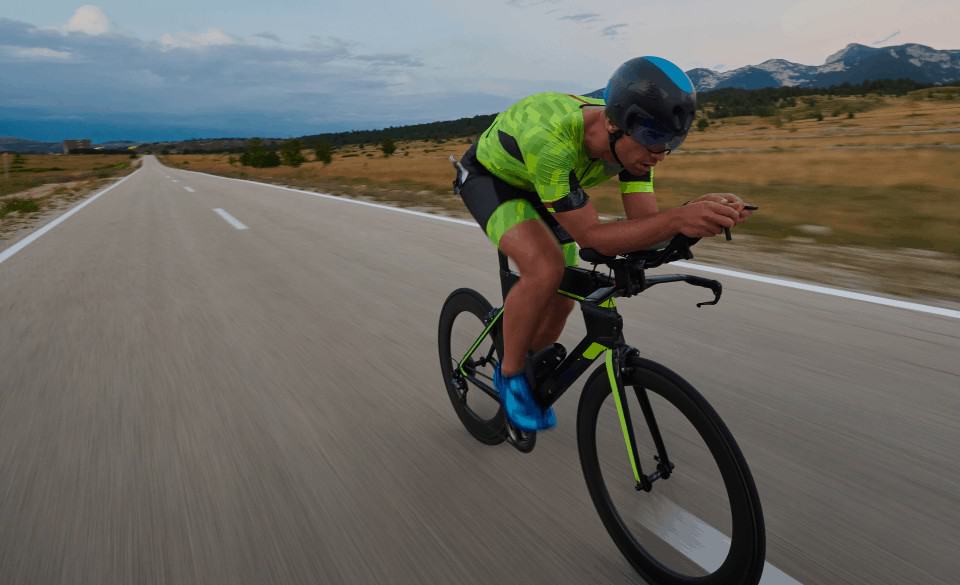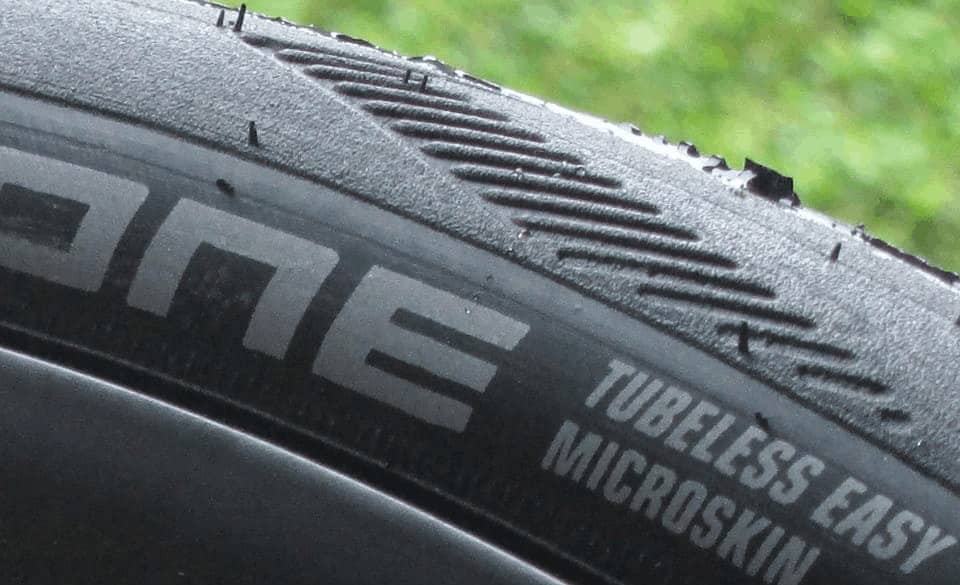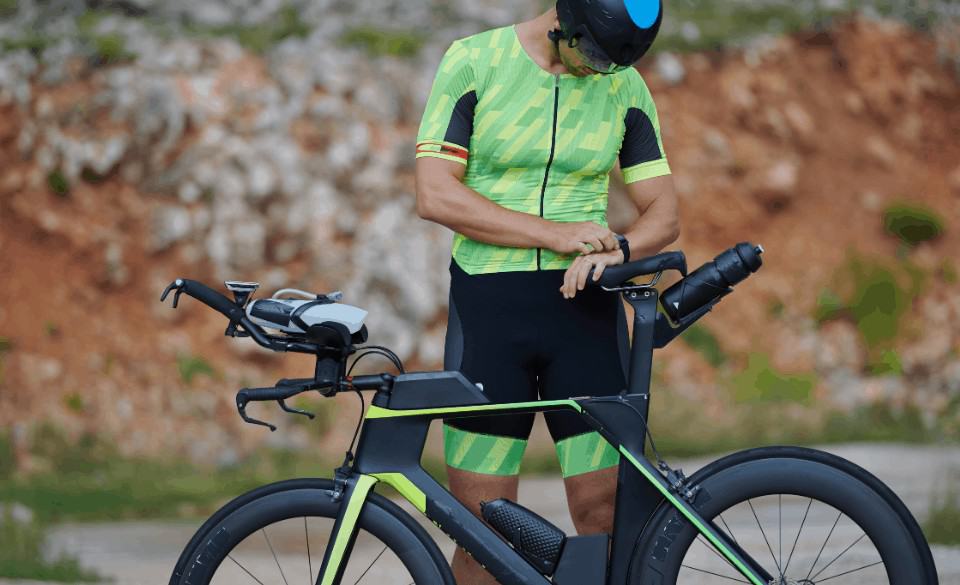
Tubeless Vs Clincher – UPDATED 2021 – Which Is Best For Triathlons?
Page Contents
The debate of road cyclists used to be tubular or clincher tires, but now with the development of tubeless tires many people are wondering what the difference between tubeless vs clincher tires are.
In this article, we look at tubeless versus clincher tires and what is the best solution for the triathlete.
Tubeless Vs Clincher – How They Differ?
The long-established clincher tire is something that every rider has used or is using today. But since the growth of tubeless tires, we have started to see a shift in the tires used in road cycling recently.
So what is the difference between a tubeless vs clincher tire? First of all, a clincher tire needs an inner tube while the tubeless does not.
Tubeless tires have a more pronounced bead that helps seal the tire to the rim and requires sealant to fill in air holes between the tire and rim. While doing this the sealant also offers puncture protection and fills any small holes caused by a puncture when out riding.
One of the issues revolves around the fact that there is an official standard for rims and tubeless tires. This means the manufacturers produce the rims and tires to their own specifications. In doing so some tubeless tires go onto a rim easily while others can become an absolute nightmare.
For the triathlete though the safety of puncture protection and possibility to run a lower pressure than clincher offers a somewhat positive reason to move into tubeless tires.
While tubeless tires basically own the mountain bike market and now starting to dominate gravel riding, road cycling is still quite not there yet. A lot of this comes down to the pressure the road tire needs to be run at. So getting road tubeless tires right is a very very hard process that has taken some years to fix.
Tubeless Vs Clincher Weight
Tubeless vs clincher weight varies greatly. Extra material is needed to produce a tubeless tire over a standard clincher tire. When you combine that with rim strips, tubeless valves, and the sealant, you can start to see all the weight adding up. Even though you have ditched the inner tube, the tubeless tire setup will most likely always be heavier.
If we look at a comparison between Continental GP 5000 tires you can see this directly. A 28mm Continental GP 5000 tubeless tire weighs 340 grams, while the standard Continental GP 5000 weighs 250 grams. This means that between a standard clincher and tubeless tire is around 90 grams. But you also need to take into account the added sealant, valves, and if needed rim strips and then around 100 grams for an inner tube for the clincher tire.
So to sum it up, don’t expect to see a drop in weight by going tubeless but in some cases, depending on the tire and if you need rim strips you may be lucky and save a small amount of weight over a clincher. If you one of those people that ride clincher tires, those two spare tubes you carry may be all the difference between a lighter or heavier setup.
For the triathlon where weight isn’t your primary factor, running tubeless can offer you the benefit of puncture protection during those longer triathlons. Typically saving you time on the side of the course having to change tubes.
Tubeless Vs Clincher Rolling Resistance
the difference between tubeless vs clincher rolling resistance is a lot down to the friction between the inner tube and case. When the inner tube is eliminated from the tubeless tire there is technically less rolling resistance.
Although once you pair a standard clincher with a light butyl tube or latex tube the rolling resistance of the clincher tire improves. For example, a recent study between the Schwalbe One Tubeless and the One V-guard saw that once the standard inner tube was replaced with a light butyl tube, the result was a slightly lower rolling resistance than the One Tubeless. If you then moved to a latex tube you would also see a slightly better decrease in rolling resistance again.
The truth is if you want the lowest rolling resistance, latex inner tubes and a fast lightweight tire provide the best solution. But latex inner tubes do have their downsides and lose air quickly, meaning you will have to check air pressure daily.
Clincher Vs Tubular Vs Tubeless
With many different models of tires to choose from and the debate around Clincher Vs Tubular Vs Tubeless continues. Each type of tire application has both many positives and negatives. So which one is the best?
Well, this depends on the type of riding you are doing and whether your racing or not.
Tubular tires have been used by professional cyclists for many years. Tubular tires offer riders the opportunity to continue riding while punctured until the team car reaches them. They also offer much better protection from flats than a clincher tire and give you the ability to run lower pressure than standard clincher tires.
Clincher tires are mostly used by the general road rider. They provide an easy solution to fix punctures, the price is much cheaper than a similar tubular tyre, and don’t have the hassle of having to glue the tire to the rim. Let alone having to install tubeless sealant and bead the tires on with a compressor. So it is quite normal these types of tires are the more popular choice of the general public.
Tubeless tires although becoming more widely used around the world, are still the least common of the three tires in road cycling. But for most riders, if they can get past the installation of the tires, valves, and fluid, it seems like a more logical step. The puncture benefits of the sealant and the ability to ride at a lower pressure than clincher basically offer somewhat near what the tubular tire offers, at a much cheaper price point and easier installation.
Best Tire Width For Triathlons
Triathlon gear changes all the time and tire width is no different. The best tire width for triathlons has changed dramatically over the past 15 years.
Earlier in the beginning of triathlon super-narrow tires (19 and 21mm) were the best option if you were looking for speed. The logic behind this was that a narrower width provides a more aero benefit through its aero profile. We also thought that a thinner tire would provide less rolling resistance and would provide less ground contact.
Gone are the days of 19mm tire width and pumping them up to 180psi. We now see more and more triathletes running 25c tire width and dropping the pressure down to 80-90psi. While this pressure is just a general figure, the actual pressure you need depends entirely on the rider’s weight and tire application.
Through multiple studies of tire pressure and tire widths, tire and rim manufacturers have found that a wider tire width allows the triathlete to run lower pressure which makes a substantial difference in road vibration felt by the rider during the bike leg of a triathlon. This means that the triathlete will have less force gripping the tri-bars and thus allowing a more relaxed aero position and the rest of your body will take far less abuse.
Even though less fatigue from vibration will allow a softer more comfortable ride it will also allow the triathlete a much faster run split.
While comfort is a large part of going wider, a wider tire width will also help the aero properties of the tire and rim together. Thus providing a more aerodynamic combination.
So move away from the narrower and harder methodology and go wider and softer.





